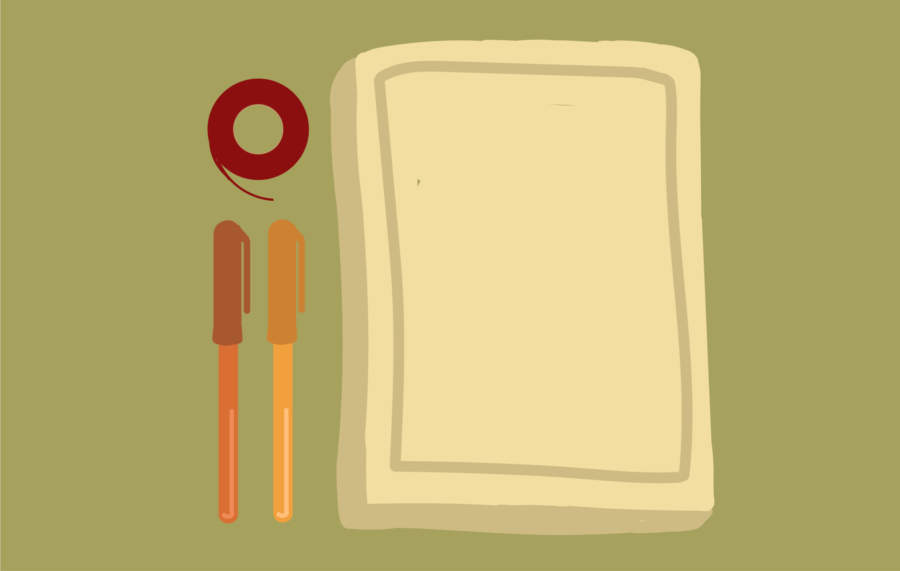How bullet journaling can help improve your mental health
Have you been struggling to get more organized in your life but aren’t sure where to start? Bullet journaling could be the answer.
Created by Ryder Carroll in 2013, a digital product designer and author in New York, the bullet journal is not your basic planner. According to the bullet journal’s official site, “The goal of the bullet journal is to help its practitioners live intentional lives; ones that are both productive and meaningful.”
In his TedX talk, ‘How to declutter your mind – keep a journal,’ Carroll explained how his idea for the bullet journal arose from his diagnosis with Attention Deficit Disorder.
Carroll found that his problem was not that he couldn’t focus on anything, but rather that he was becoming overwhelmed from trying to focus on everything at once.
Although I don’t have ADD, I find this to be true of myself and many others. Carroll seemingly made this connection as well, as he explains in his TedX talk how everyone’s “busyness” in their lives is often just overwhelming thoughts and feelings.
“We are always ‘busy,’ but being busy doesn’t mean you are being productive,” he said. “A lot of times, being busy means you are…overwhelmed. A lot of this is due to the overwhelming amount of choices we have to make in modern-day life.”
Carroll went on to describe his idea of decision fatigue, which he explains is people’s lowering desire and refusal to make decisions due to the large number of decisions that are made in their day-to-day lives.
Carroll went on to explain that this continued decision fatigue can become detrimental to our mental health.
In his TedX talk, Carroll compared this decision fatigue to a cluttered pantry.
“Without dealing with these thoughts, we just stuff them in the back of our mental pantry until we have no more room left to think clearly,” he said. “That can cause an incredible amount of stress and anxiety. We need room to think and to focus.”
Carroll explained the bullet journal is a way to reduce decision fatigue and clean out the ‘pantry’ of our minds. According to Carroll, the bullet journal accomplishes this because it forces people to externalize their thoughts on paper, which takes ‘food out of the pantry,’ or declutters our minds.
“Holding thoughts in your mind is like trying to grasp water,” he said. “It’s nearly impossible. But by writing down our thoughts, we can capture them clearly so we can work on them later.”
The bullet journal is a great tool people can use to help decide what deserves their focus in life. Carroll explained this focus uses both our energy and our time, which are invaluable to us as people.
Carroll also stressed the importance of keeping up with your journal, saying that the daily commitment will make a big difference in people’s lives.
“It will help you go from leading that busy life, to leading an intentional life,” he said. “Rid yourself of the things that don’t matter, so you have the time and energy to focus on the things that do.”
While the bullet journal has been adopted, adapted and altered by its user dramatically over the years, some basic components have remained constant. Some of the bullet journal’s main components are listed below.
Bullets
Bullets are short-form sentences paired with symbols that visually categorize entries into tasks, events or notes.
You should assign tasks, events and notes a unique symbol so you’ll know what it is when you look at it in the journal.
Example: Tasks = .
Events = O
Notes = –
Task markings
You can also mark the state of tasks with different symbols to indicate whether or not it is complete.
Examples:
. = incomplete
x = complete
cross-out = task irrelevant
< = task ‘migrated’ or moved to a new monthly or future Log
It might be helpful to create a key in your journal with these symbols and their meanings for reference.
Daily log
A daily log consists of a list of tasks that need attention today. You should list each daily log with the date. The official bullet journal site recommends daily logs be created the night before or the morning of to ensure you have enough space to list the tasks for each day.
Index
The index is at the front of your journal and helps you keep track of its contents. It should list the page numbers of each section of the journal.
Monthly log
Monthly logs consist of monthly calendar pages, which are used to provide a simple look at major events for the month, and tasks pages, which are designed to act as monthly mental inventories.
Whether it be to-do’s that need accomplished this month or feelings and emotions that have been weighing on you, the task page is a great place to put your feelings on paper. Feel free to add to this page throughout the month and reflect on past months to see if anything has changed or needs more attention.
Future log
The future log acts as a yearly log for dated entries that will occur in more than one month’s time. This log is a great place for future goals and deadlines you are actively working towards. Be sure to look at your future log at the start of each month to see if you can place anything in your monthly log.
Custom logs
This is where you can allow your creativity to run wild! Whatever you feel like you need to track on a more daily basis, you can include as a custom monthly or future log.
An example of these are “habit trackers.” With habit trackers, it’s easy to keep track of water intake, sleep schedules or even monitor spending habits.
If you are looking for a way to keep yourself accountable in a certain area of your life, creating a custom log is a great way to do so.
Monthly migration
According to bullet journal’s official site, ‘monthly migration’ is a great way to reflect and see what is worth your time and what isn’t.
Once you approach a new month, look back at your daily logs from the previous month to figure out which tasks were left incomplete. Then, figure out which incomplete tasks are worth your time and energy this month and migrate those tasks to this month’s log.
What you need
1. Notebook/Journal: can be lined, unlined or dotted. You can even purchase an official bullet journal notebook here.
2. Pens/Markers (You can make the journal as simple or artistic as you want!)
3. Optional: ruler (To keep your lines straight and even)
Video tutorials:
If you aren’t sure where to start, the videos below are some great references for bullet journaling beginners. Whether you want a simple, get-the-job-done type journal or a more artistic one, the videos below provide examples of both.
Simple Example: Bullet Journal’s How to Bullet Journal
Artistic Example: Seventeen Magazine’s How to Start a New Bullet Journal
After reading more about the bullet journal and the impact it can have on one’s life, I decided to make myself one! It was a lot of fun to put together and I am excited to put it to use.
I hope you enjoyed this crash-course in bullet journaling. Maybe it can be your ticket to a more organized and productive life.









